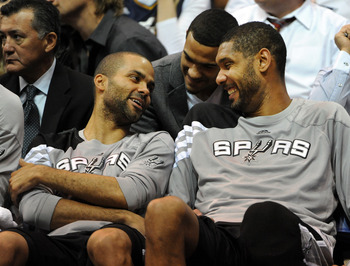(Written for Blue Man Hoop)
In the last 8 days, the Warriors have suffered two discouraging losses to the Houston Rockets. The first, a blowout in Houston, saw the Warriors score only 83.2 points per 100 possessions while allowing 105.2. James Harden scored 34 points on a 65.5 percent true shooting percentage, while Harrison Barnes, Stephen Curry, and Klay Thompson were held to a combined 12-of-40 shooting. Monday night, the Warriors lost the rematch in Oakland. Though the offense was excellent, scoring 113.7 points per 100 possessions, the Rockets surpassed it, scoring 117.7.
In both games against the Rockets, the Warriors have seemed overmatched. Houston’s offense has effortlessly sliced through the Warriors defense while the Warriors offense has at times been slowed, especially when Diwght Howard and Patrick Beverley share the court. While both Houston games were played without Andre Iguodala, the Warriors’ matchup issues seem significant. Patrick Beverley fits the mold for Curry defenders. Quick and physical, Beverley is able to deny open shots from the perimeter, forcing Curry into a lurking Dwight Howard in the paint. Howard also has a significant effect in denying Curry on the perimeter. His ability to hedge and recover on screens, contrary to the Rockets’ typical strategy, gives the Houston perimeter time to recover to Curry without surrendering easy baskets to the role man. Part of this is due to Andrew Bogut’s offensive limitations. When Howard is defending Bogut, he can hedge a few extra steps on Curry, and play aggressive off ball help defense, knowing that Bogut must reach the basket to be effective offensively. In the two games versus Houston, Curry has scored 42 points on 35 true shooting attempts (possessions used excluding turnovers). While his 57.1 percent true shooting percentage versus Houston is only slightly below the season average of 59.5, Curry has struggled from the field. Ignoring the free throws that have salvaged his scoring, Curry has scored .846 points per shot.
The real offensive struggles come from the pieces surrounding Curry. Harrison Barnes has shot a mediocre 50 percent true shooting percentage versus Houston, while Klay Thompson has shot a mind-numbingly horrendous 33.9 true shooting percent, per NBA Wowy. While Barnes has not excelled, he has not been especially damaging. Thompson, typically an efficient scorer, has crippled the Warriors offense.
Here is Thompson’s shot chart versus Houston, via NBA.com
(Disclaimer: the following should not be viewed by children below the age of 13)
Part of Thompson’s struggles, beyond field goal variance, may be due to the defensive burden of defending James Harden. When Iguodala returns, Thompson may have more success offensively simply due to the decreased expenditure of energy on defense.
David Lee also creates some damaging matchup issues versus Houston. Lee is too slow to defend wings in Houston’s four-out attack, and does nothing to slow guards against the pick and roll. ESPN writer Ethan Strauss made a video displaying Lee’s struggles defending Terrence Jones in the first game versus Houston:
The Warriors struggles versus Houston, though not entirely condemning, are an issue. The Warriors have not done an effective job optimizing the expected value of a high percentage of their possessions. To overcome Houston, and many of the West’s great teams, the Warriors must do a better job positioning themselves for success.



